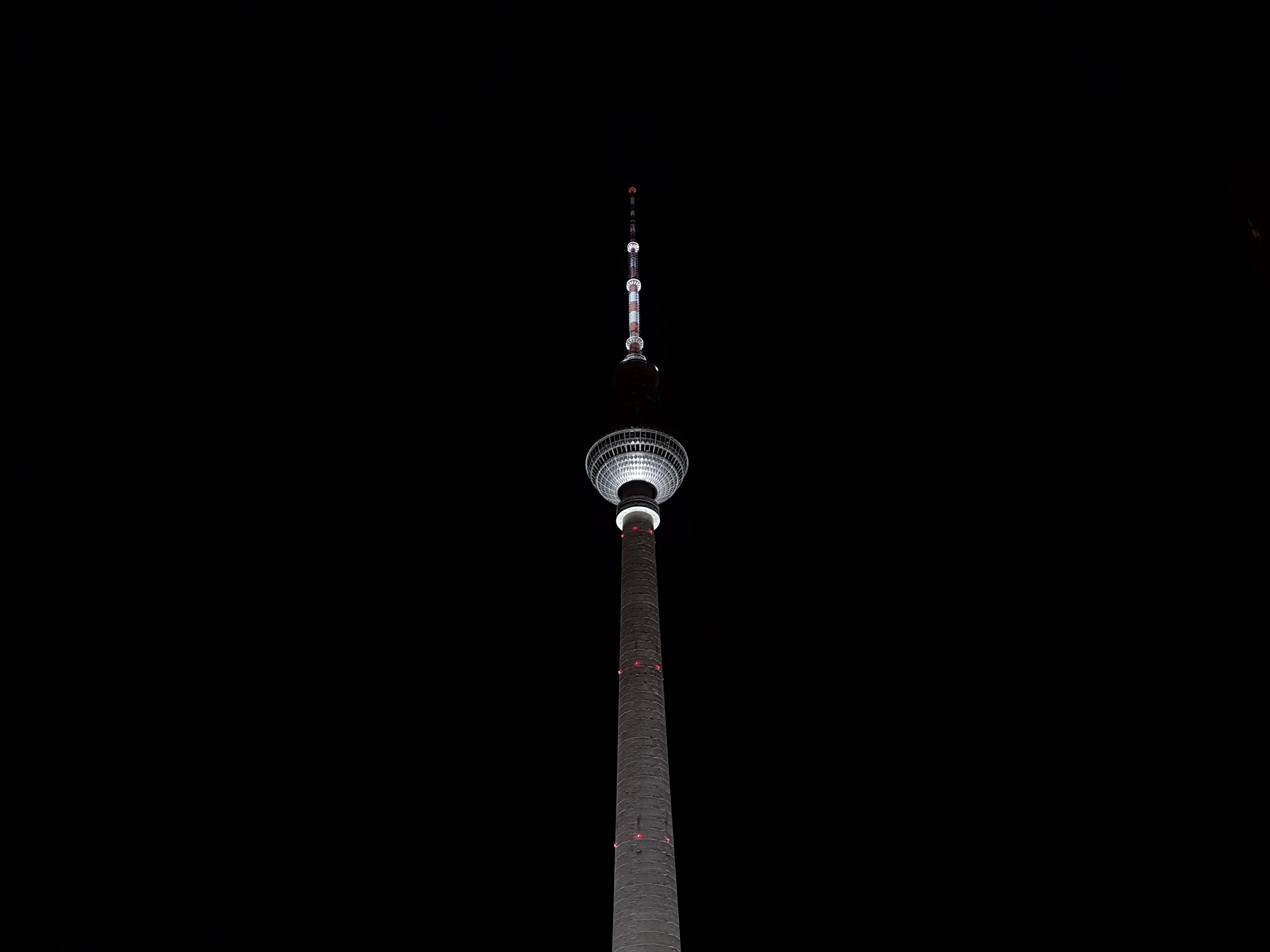
A Place in Process
Berlin’s Unusual Journey to Becoming a Cosmopolitan Creative City
By Ramona Raabe, April 2017, Berlin
At the beginning of the 20th century, the publicist and art critic Karl Scheffler described the German capital as follows: “Berlin is a city condemned forever to becoming and never being”. Little did he know that this phrase would prove true for more than a hundred years to come. However, what seems at first glance like the tragic machinations of fate could also be seen as symbolic of the never-ending process of evolution inherent to all forms of life.
Internationally known as a culturally rich metropolis with a creative and digital scene, the city in the middle of Europe seems to be in a constant state of creative transformation. The city might seem familiar in one moment, but will astound you in the next. Why is that so?
Testing ground for alternative lifestyles and new role models
Berlin’s contemporary innovative creative scene is rooted deeply in its manifold history. In the 1920s, Berlin had already gained a reputation for being a distinctive European city with an unusual level of creativity and liberality at its heart. Even then, the city was a cultural metropolis and a great testing ground for alternative lifestyles and new role models. It was an exciting and thrilling industrial town with a vibrant art scene that thrived in the wake of its resurrection after World War I and the ambience of a dazzling age, characterized by radical change and the spirit of an inspired avantgarde. Together with a desire for pleasure, there was a captivating energy in the city’s air, which came to an end with the Great Depression of 1929 and was brutally choked by the Nazi regime in the 1930s.
Unlike most European cities, Berlin has survived through periods of dictatorship, nationalism, war, communism, occupation, actual division, reunion, and a return to a constitutional democracy within just one century — and these perpetual governmental and sociopolitical changes are reflected in the varied architecture and diverse cultural heritage of Berlin’s cityscape. Much of Berlin is strikingly beautiful and impressively constructed, but, here and there, some spots remain awfully unattractive.
Peaceful revolution
The events of 9 November 1989 marked the major turning point in the city’s recent history, when the peaceful revolution in East Germany brought about the fall of the Wall and fundamentally changed the lives of all Germans. Images of that night have since become part of a collective understanding of German identity: East Berliners stormed over the border that had limited their lives for more than 28 years, while people in West Berlin lost the privilege of living in a subsidized confined island after three decades. It was the beginning of a new start, a blank slate, which had previously been unimaginable.
But if an unthinkable historic happening — the fall of the Wall — had become reality, what else was possible? Almost everything, so it seemed. After the first thrills of ecstasy and shock, a joyful atmosphere of radical potential began to take hold. Certain major factors contributed to making these extraordinary possibilities not only a sentiment, but a reality. First and foremost, the availability of free space was unparalleled. Vacant rooms and even whole compounds, abandoned offices and former living spaces were available for rent and purchase and consequently offered an ideal space for development. Rents were low and the affordability of places was unusual. Moreover, Berlin at that time already had an exceptionally extensive public transport system, consisting of an advanced underground and train structure. This network ensured a level of mobility within the city that enabled rapid transit between various parts of town, and thereby also supported a quick exchange and realization of ideas.
Overflowing with diversity and heterogeneity
With all these favorable conditions, Berlin offered many opportunities and was easily accessible. It rapidly became, at once, everybody’s place — in the sense that it welcomed all kinds of people — and nobody’s place — in the sense that governmental restrictions were comparatively low, simply because the authorities had to deal with more urgent priorities at the time. The result was a city overflowing with diversity and heterogeneity, and Berlin emerged as an attractive hot-spot, a promising place-to- be, that was just waiting to be shaped anew.
The ultimate reward for many was not a paycheck at the end of the month, but the feeling of being part of a wave of change and a sense of freedom which was of much more personal value than monetary compensation. Germany’s capital and its population were in motion, people were in the mood to both create and celebrate. And the continuous soundtrack of that movement was TECHNO. The electronic dance beats conveyed the dominant and genuine “Lebensgefühl”, a certain attitude towards life.
But to actually build an economy and to profit from the influx of new energy into the city would take greater effort and practical strategies. When the city recognized its strong potential in the creative sector (in part because there were no longer any other industries to contest it), its main challenge was to provide an efficient and professional base to support upcoming businesses sufficiently, so they could flourish and thrive.
It took dedicated administrative and voluntary work to establish the networking opportunities needed for both funded and independent ventures. By promoting financing options for new businesses, leading figures and participants established a rich community that continues to benefit from collaborative and synergistic approaches. Over the years, trade fairs and arts festivals became international platforms for each of the growing market sectors, enabling encounters between established designers and young talents, as well as between entrepreneurs, investors, and media representatives.In addition, the city increasingly branched out into intercontinental collaborations. Dozens of Berlin-based designers have had the chance to travel extensively in the past few years, and to present their products and projects around the world.
Part of the UNESCO Creative Cities Network
Berlin’s creative profile was recognized on a global scale when it was awarded with the UNESCO certification “City of Design” in 2006. The city became part of the Creative Cities Network, a worldwide organization which understands creativity as a strategic factor for sustainable urban development, and which is also engaged in the preservation of cultural diversity.
This affiliation enabled Berlin to deepen its exchange with other creative cities and accelerated the process of structural change from an industrial to a creative and digital economy.
Today, Berlin is not only the political center of Germany, but also one of the most dynamic economic regions in Europe. Every year many companies are opting to open offices in Berlin, thus attracting yet more talented people from other German cities and from abroad. Most of all, Berlin has a special pull for start-ups in the creative economy and the technology sector. Berlin has already become the most innovative state in Germany.
The immense variety of Berlin’s creative economy ranges across the industries of fashion, music, art, film, media, architecture, gaming, new digital media, a growing start-up scene, and an outstanding infrastructure for education and research. About 30,000 companies employing more than 195,000 people in total generate a yearly turnover of more than 18 billion euros.
No more walls!
Of course Berlin is not simply a happy creative wonderland. It is still adversely affected by the retraction of the mechanical industries and the discontinuation of sites previously run by conglomerates. And there is hardly another place in Germany with as many people living in poverty as there are in Berlin. This is something that should always be taken into consideration when discussing this city. But it is also a place where so many creative people work not on building new walls, but breaking them down. And they continue to do so in open and cross–disciplinary interaction. Berlin is a capital of constructive freedom, an open place that aims to always stay connected to the world.
The spirit at the heart of this city is a constant dynamic process, and hopefully it will never arrive at a standstill.
Because in Berlin, process means progress. ■
